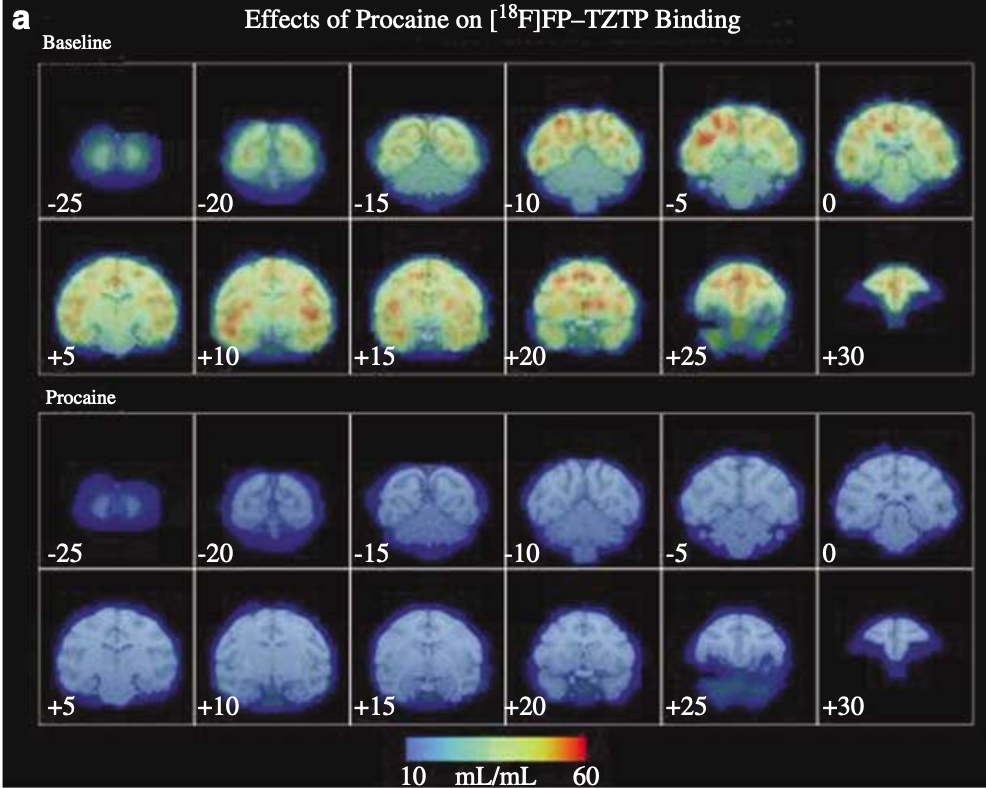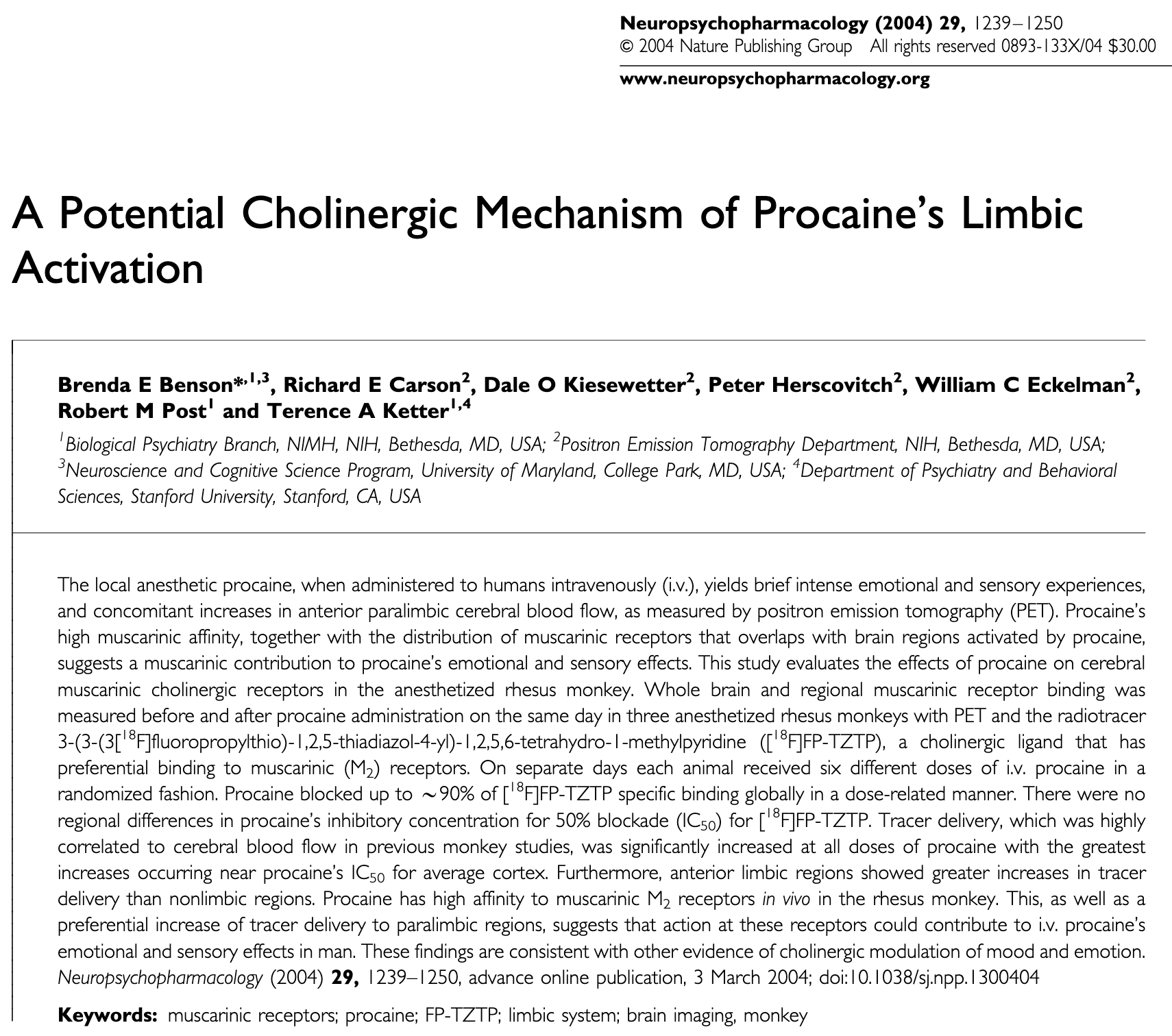

FREE FULL TEXT (PDF)
Abstract
The local anesthetic procaine, when administered to humans intravenously (i.v.), yields brief intense emotional and sensory experiences, and concomitant increases in anterior paralimbic cerebral blood flow, as measured by positron emission tomography (PET). Procaine’shigh muscarinic affinity, together with the distribution of muscarinic receptors that overlap with brain regions activated by procaine, suggests a muscarinic contribution to procaine’s emotional and sensory effects. This study evaluates the effects of procaine on cerebral muscarinic cholinergic receptors in the anesthetized rhesus monkey. Whole-brain and regional muscarinic receptor binding was measured before and after procaine administration on the same day in three anesthetized rhesus monkeys with PET and the radiotracer3-(3-(3[18F]fluoropropylthio)-1,2,5-thiadiazol-4-yl)-1,2,5,6-tetrahydro-1-methylpyridine ([18F]FP-TZTP), a cholinergic ligand that has preferential binding to muscarinic (M2) receptors. On separate days each animal received six different doses of i.v. procaine in a randomized fashion. Procaine blocked up toB90% of [18F]FP-TZTP specific binding globally in a dose-related manner. There were no regional differences in procaine’s inhibitory concentration for 50% blockade (IC50) for [18F]FP-TZTP. Tracer delivery, which was highly correlated to cerebral blood flow in previous monkey studies, was significantly increased at all doses of procaine with the greatest increases occurring near procaine’s IC50for average cortex. Furthermore, anterior limbic regions showed greater increases in tracer delivery than nonlimbic regions. Procaine has high affinity to muscarinic M2 receptors in vivo in the rhesus monkey. This, as well as a preferential increase of tracer delivery to paralimbic regions, suggests that action at these receptors could contribute to i.v. procaine’s emotional and sensory effects in man. These findings are consistent with other evidence of cholinergic modulation of mood and emotion.
